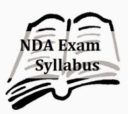Check complete NDA Syllabus or Pattern 2017-18 Examination| Notification
 The syllabus of NDA entrance examination is given below. Candidates can check the complete set of the NDA syllabus and visit on the official site for more details. NDA Exam syllabus : Paper 1 and Paper 2 Entrance Test.
The syllabus of NDA entrance examination is given below. Candidates can check the complete set of the NDA syllabus and visit on the official site for more details. NDA Exam syllabus : Paper 1 and Paper 2 Entrance Test.
Paper-1: Mathematics (Maximum Marks-300)
NDA Exam syllabus : Paper 1 and Paper 2 Entrance Test
- Algebra (Topic):
Application Form NDA-1 Exam 2017 Visit here
NDA (1 & 2) Eligibility Criteria 2017 Check here
NDA Physical Standard Test Details| Age limits Check here
NDA (1 & 2) Exam Syllabus or Exam Pattern Check here
UPSC NDA 1 & 2 Entrance Examination detail Check here
Operation on sets, De Morgan laws. Concept of a sets, Vann diagram. Cartesian product relation, equivalence relation. Complex number-basic properties, modulus, argument, cube root of unity. Conversion of a number in decimal system to binary system and vice-versa. Binary system of numbers. Quadric equations with real coefficients. Arithmetic, Permutation and Combination. Geometric and Harmonic progressions. Solution of liner in equations of two variables by graphs. Binomial theorem and its application. Representation of real numbers on a line. Logarithms and their applications.
Download UPSC NDA Exam Admit Card 2017 Visit here
- Matrices and Determinants (Topic):
Applications-solution of a system of liner equation in two or three unknowns by Cramer’s rule & Matrix Method. Adjoint & inverse of a square matrix. Type of matrices, Basic properties of determinant of a matrix, Operation on matrices determinant of a matrix,
- Trigonometry (Topic):
Angles and their measures in degree and in radians trigonometrically ratios. Multiple and sub-multiple angles inverse trigonometric function. Trigonometric identities Sum and difference formulae. Application –Height and distance, properties of triangles.
- Differential Calculus:
Composite functions, (1-2-1) one to one, onto and inverse functions. Notion of limit, Standard limits-examples. Derivation of a function at a point, geometrical and physical interpretation of derivative- applications. Concept of a real valuate function- domain, range and graph of a function. Derivatives of a function at a point, Derivatives of sum, Derivation of a composite function, Derivatives of a function with respect of another function. Application of derivatives in problems of maxima and minima. Increasing and decreasing functions.
- Analytical Geometry of two and three dimensions:
Point in a three dimensional space, distance between two points. Rectangular Cartesian Coordinate system. Angle between two lines. Distance formula. Equation of a plane and a line in various forms. Equation of a circle in standard and in general form. Eccentricity and axis of a conic. Standard forms of parabola, ellipse and hyperbola. Angle between two line and angle between two planes. Equation of a sphere.
- Integral Calculus and Differential equations:
Integration as inverse of differentiation, integration as inverse of differentiation, Standard integrals involving algebraic expressions, integration by substitution and by parts, trigonometric, exponential and hyperbolic functions. General and particular solution of a differential equation. Evaluation of definite integrals-determination of area of plane regions bounded by curves –applications. Exponential and hyperbolic function. Definition of order and degree of a differential equation. Formation of a differential equation by example.
- Vector Algebra:
Application-work done by a force and moment of a force, and geometrical problems. Vectors in two and three dimensions. Magnitude and direction of a vector. Scalar product or dot product of two-vectors. Unit and null vectors, vector product and cross product of two vectors, addition of vectors,
- Probability and Statistics:
Probability: Elementary and composite events. Random experiment, Definition of probability-classical and statistical- examples. Outcomes and associated sample space, events, Elementary theorems on probability –simple problems. Mutually exclusive and exhaustive events. Conditional probability, Bayes’ theorem- sample problems. Impossible and certain events. Binomial distribution, Examples of random experiments giving rise to Binominal distribution.
Statistics: Frequency distribution, Classification of data, Frequency polygon-examples. Measures of Central tendency-mean, medium, mode cumulative frequency distribution-examples Graphical representation-Histogram, Pie Chart, correlation and registration. Variance and standard deviation-determination and comparison.
Part-2: General Ability Test (Maximum Marks-600)
Part (A)- English (Maximum Marks 200).In this Question paper the understating level will be majored of the candidates. In this question paper various aspects like: vocabulary, Grammar and usage, comprehension and cohesion in extended text to test the candidate’s proficiency in English.
Part-(B)- General Knowledge